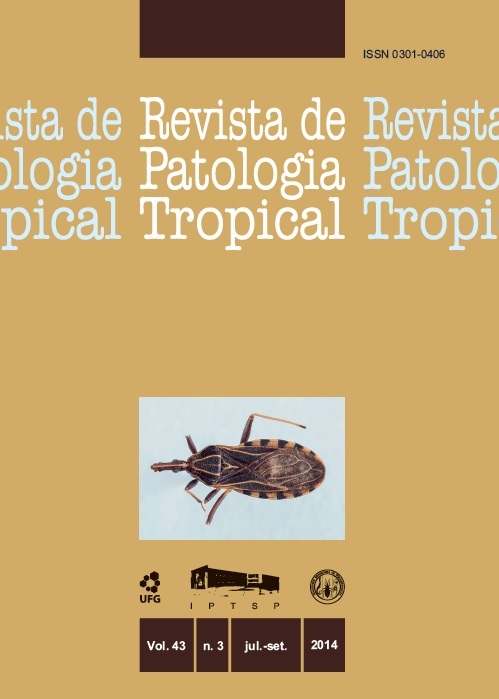IN VITRO CHARACTERISTICS OF ISOLATES OF CRYPTOCOCCUS LAURENTII COMPLEX IN DIFFERENT CULTURE MEDIA
DOI:
https://doi.org/10.5216/rpt.v43i3.32199Keywords:
Cryptococcus laurentii, phenotyping, culture mediaAbstract
Cryptococcus laurentii is a fungus distributed in different environments, where individuals come into contact with it, become colonized and develop infections that vary according to their immune status. This species is considered emerging, and for its laboratory identification specialized technical knowledge is required, as well asspecific laboratory tests that are not always available. The objective was to describe the phenotypic characteristics of in vitro C. laurentii complexes in culture media that are routinely used in microbiology laboratories. We studied isolates of C. laurentii complex, C. neoformans, C. albidus and Candida albicans, in the evaluation of in vitro tests: growth in different culture media (Candida chromogen, chocolate agar, blood agar, EMB agar, MacConkey agar, SS agar and Mycosel®); melanin production in niger seed agar, growth at 37ºC, assessment of growth atmosphere, analysis of cell micromorphology, catalase, urease, beta-glucosidase, gelatinase, phospholipase, proteinase, DNase, amylase, hemolytic activity, and susceptibility testing to antifungals. The results show that strict aerobes are different: for C. neoformans, no pigment was produced on niger seed agar, and all isolates of C. laurentii were catalase-positive, and had amylase activity. Halos around the antifungal disks ranged between 14 and 35 mm for amphotericin B, 31-40 mm for voriconazole and 13-28 mm for fluconazole. We conclude that C. laurentii grows in different culture media, with morphocolonial features, aspects, borders and various colors, like other species of yeast, so classical tests for identification are required. Alongside the typing tests, exoenzymes and in vitro susceptibility to antifungal agents may be useful in the differentiation of isolates.
Downloads
Downloads
Published
How to Cite
Issue
Section
License
The manuscript submission must be accompanied by a letter signed by all authors stating the full name and email address, confirming that the material has not been published or is under consideration for publication elsewhere, and agreeing to transfer copyright in all media and formats for Journal of Tropical Pathology. The authors will not be paid for published articles. They are solely responsible for the content of those articles, even if the Editor holds the right to adjust them to the norms of the journal.
The reviewers will not be paid for the peer review process.

